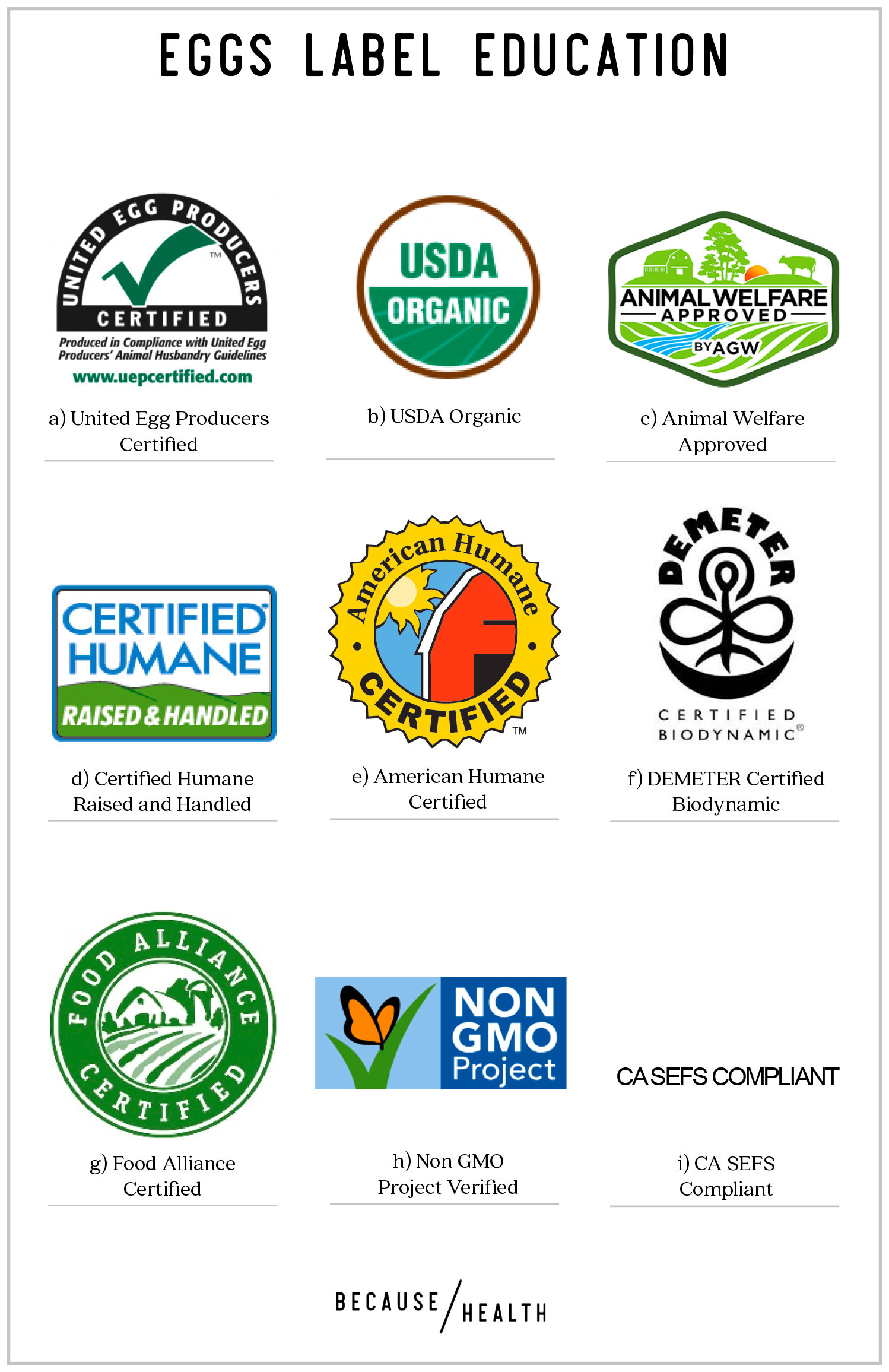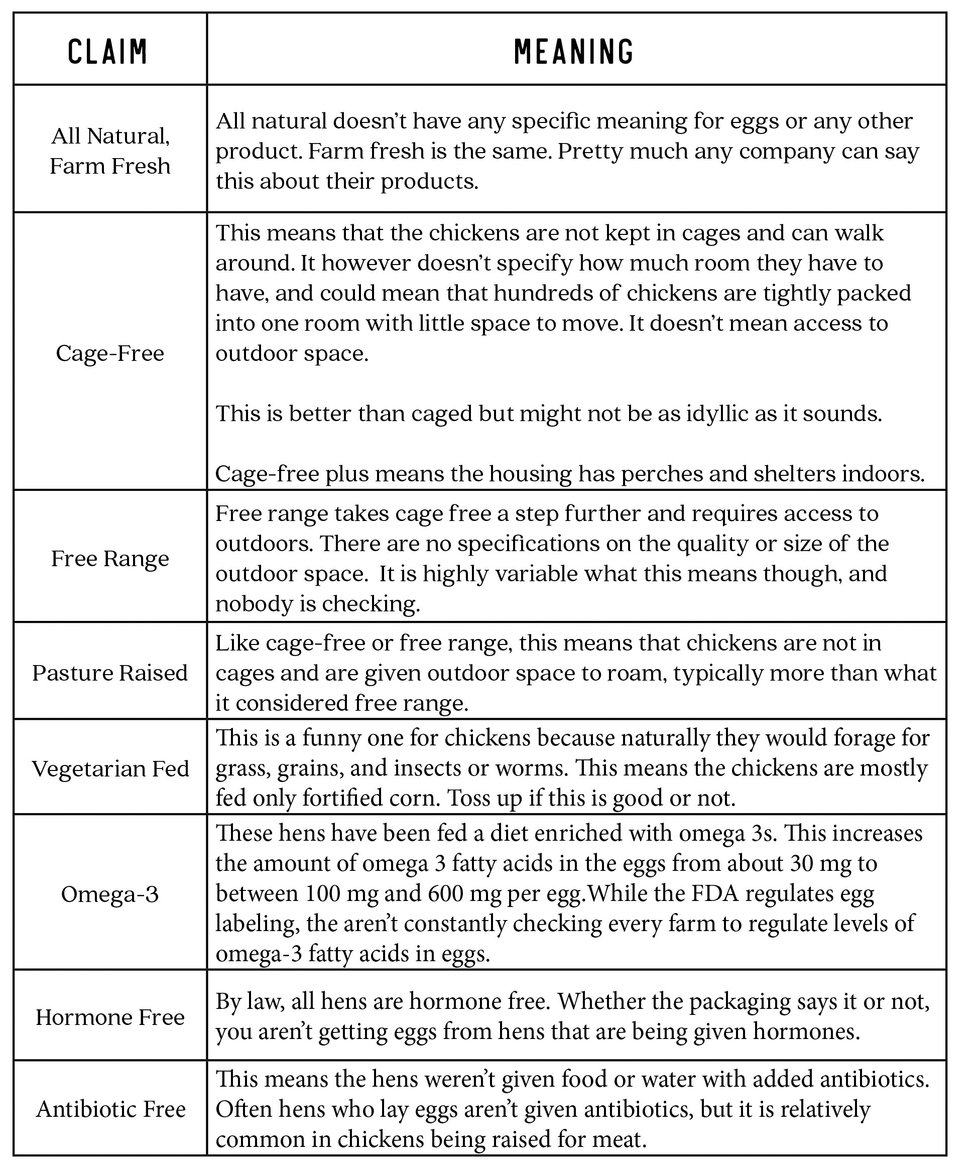Label Education: Eggs
Helping you determine if you should really be shelling out the big bucks
Eggs are a wonderful thing. They are super versatile and often are a cheap source of protein – not to mention delicious. But, have you ever been super overwhelmed looking at all the claims your egg cartons make? Cage-free, free range, organic…What’s the difference? Are some claims better than other?
We created a list of as many different claims and certifications as we could find on different egg cartons. Then we started researching to figure out what each one means, and who, if anyone, is making sure these claims are met and true. When we are looking at eggs in terms of how what we eat can impact our health, we personally think organic tops the list. Organic sets standards about cage free as well as antibiotics and hormones, so it’s one, easily recognizable label that is covering many of the other categories listed.
Below is our most comprehensive list of different characteristics your eggs can have.* The first table is a set of certifications with strict guidelines and rules that must be met in order to obtain the seal and the second table are label claims any company can make with any verification. Read them over then get cracking!
* If you have multiple options for brands that meet your preferred labels, we also suggest looking for egg cartons made of cardboard instead of styrofoam or plastic. While the egg aren’t really absorbing chemicals from the cartons like other foods absorb chemicals from the food packaging, the packaging still has an impact on the world around us and our health.
** Also, there are tons of ways to reuse and repurpose egg cartons. Check out some suggestions from Recyclebank.
Certifications

a) United Egg Producers Certified
A set of standards regulating hen housing and well-being for farms that raise hens. These standards are simple and many farms meet them.
b) USDA Organic
Eggs laid by cage-free or free range chickens that are fed organic feed and have access to the outdoors. The chickens also do not ever receive hormones or antibiotics.
It does not set regulations regarding beak-cutting or amount of space.
c) Animal Welfare Approved
Assures that flock sizes are capped, beaks aren’t trimmed, no animal byproducts are allowed in feed, and the hens must have access to outdoor space.
d) Certified Humane Raised and Handled
This non-profit assured that farm animals are treated kindly and on farms with more responsible practices
Their standards address categories including feed and water, the building, flooring, and access to outdoor space, air quality, space per animal, ventilation, and healthcare treatment of the animals.
e) American Humane Certified
Use Animal Welfare Standards that are built upon the Five Freedoms of Animal Welfare, which require that an animal be healthy, comfortable, well-nourished, safe, able to express normal behavior, and free from unpleasant states such as pain, fear, and distress.
f) DEMETER Certified Biodynamic
This certification is for a form of Organic farming that requires the farm to be minimally dependent on imported materials and instead focuses on utilizing what considered waste . DEMETER requires that the farms also meet National Organic Program standards which do not allow synthetic fertilizers or pesticides.
Certified farms must also set aside 10% of their land as a biodiversity reserve.
g) Food Alliance Certified
Setting standards for animal welfare including how animals are fed, housed, as well as waste management and pest management.
h) Non GMO Project Verified
Non-GMO project verified requires that the product have systems in place that address testing, traceability, segregation, formulation, labeling and quality assurance. The certification assures meaningful ongoing testing of high GMO risk inputs, and that organizations are effectively working to minimize the risk of GMO contamination to the chain.
i) CA SEFS Compliant
This is a new regulation as of 2015 in California that implements a set of measures to reduce the risk of Salmonella from shell egg food safety. It includes a vaccination program and testing of Chick Paper testing. Chick paper is used when moving chicks.
Label Claims

